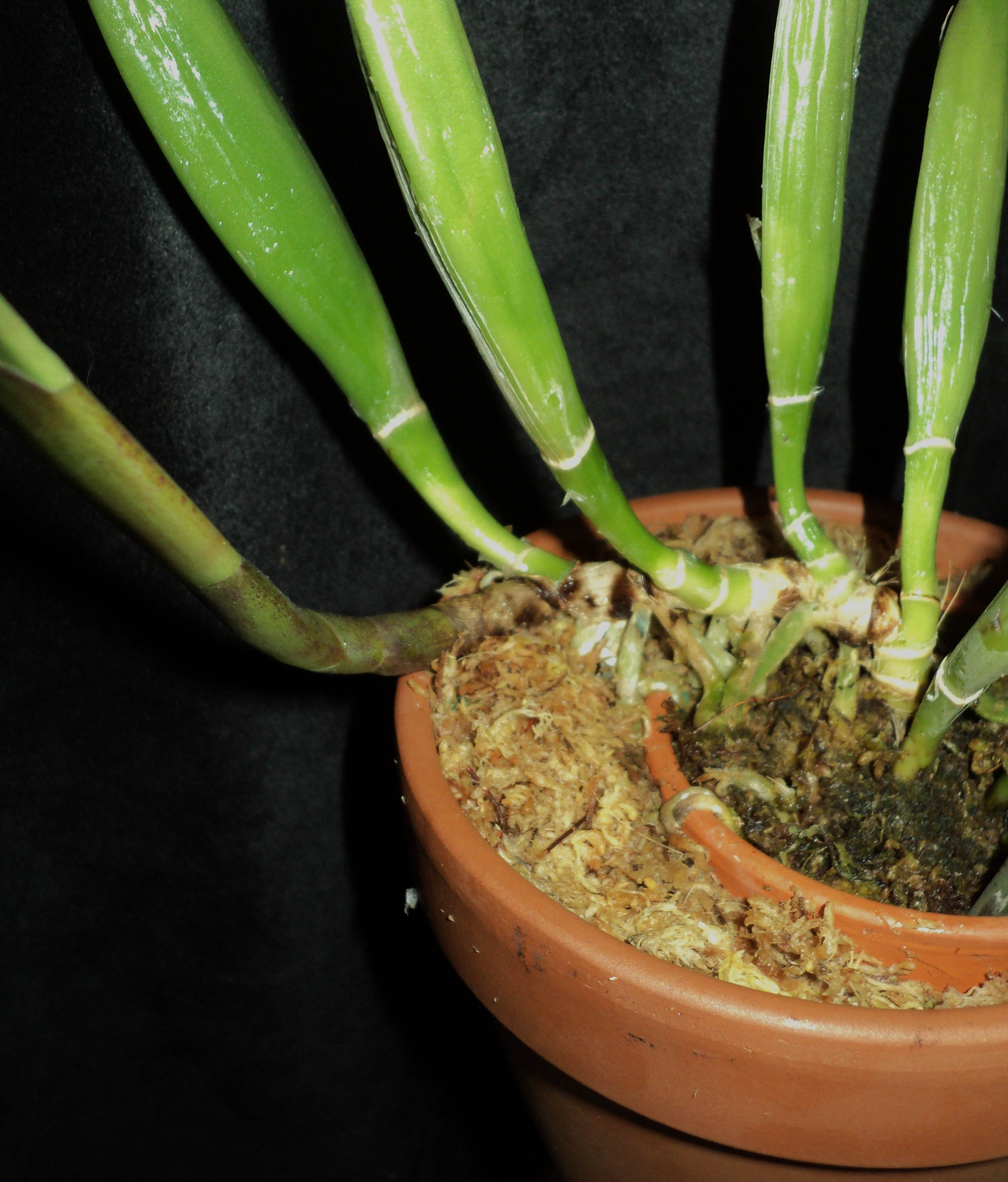 Orchid fanciers love their plants. They spend hours tending to them, offering words of encouragement, and even shining the leaves. But when it comes time to repot that overgrown Dendrobium or Oncidium, suddenly the laundry looks more appealing.
Orchid fanciers love their plants. They spend hours tending to them, offering words of encouragement, and even shining the leaves. But when it comes time to repot that overgrown Dendrobium or Oncidium, suddenly the laundry looks more appealing.
Hobbyists tend to procrastinate repotting because it can be a messy job with bark and moss flying all over the floor and used pots piling up like dirty dishes. The slow-growing epiphytes often don’t show improvement for months so repotting can also seem like a thankless chore. Despite their reputation for ‘thriving on neglect’, orchids still need a little tender-loving care in order to produce joyous blossoms.
There are many ‘tricks’ that seasoned growers use to ease the burden of repotting. The idea is to give an orchid exactly what it needs to flourish – as expeditiously as possible and with minimal carnage.
The best time to repot depends on a number of factors but is typically spring to summer, just after blooming, or when new root tips are visible. The grower must be motivated and ready to act when the plant is ready. There are dozens of little timesavers that can be utilized. Here are four:
POT IN A POT
Cattleyas, Dendrobiums, and Oncidiums make new pseudo-bulbs every year which seem to ‘walk across the pot’. Eventually, these bulbs grow over the edge of the pot – a condition that can cause a downward slide in health since emerging roots can’t reach the potting media and remain too dry. Try placing the entire pot inside a slightly larger pot and adding fresh media. The roots won’t be disturbed and the plant should bloom on schedule.
SPLIT THE LEAF
 Phalaenopsis often drop their lower leaves as they grow new ones on top. The old leaves turn yellow before falling off and should be removed when repotting. It is tempting to yank a dying leaf off but great care must be taken since fragile emerging roots (and sometimes flower spikes) are nearby. Try gently tearing the leaf down the middle and slowly peeling away the two pieces.
Phalaenopsis often drop their lower leaves as they grow new ones on top. The old leaves turn yellow before falling off and should be removed when repotting. It is tempting to yank a dying leaf off but great care must be taken since fragile emerging roots (and sometimes flower spikes) are nearby. Try gently tearing the leaf down the middle and slowly peeling away the two pieces.
WET THE ROOTS
 In the jungle, epiphytic orchids cover tree branches with their roots. In captivity, these orchids continue to carry that inherent desire to let it all hang out. It is easy for a novice to be intimidated by those ‘long white things’ coming out of the pot which, incidentally, are easily broken. The secret to re-potting a plant with exposed roots is to thoroughly wet them ahead of time so that they will bend without breaking.
In the jungle, epiphytic orchids cover tree branches with their roots. In captivity, these orchids continue to carry that inherent desire to let it all hang out. It is easy for a novice to be intimidated by those ‘long white things’ coming out of the pot which, incidentally, are easily broken. The secret to re-potting a plant with exposed roots is to thoroughly wet them ahead of time so that they will bend without breaking.
SOAK THE MEDIA
Common potting materials include sphagnum moss, fir bark, cypress mulch, coconut fiber, wine corks, clay pebbles, and many more. Soaking the media for a few hours in a bucket of water gives the media a little ‘starter moisture’ and is much easier to work with. Your finger tips will also appreciate this as dry media can be very abrasive.
My father, known for his orchid trivia, notes that the word, ‘repot’ came into existence around 1834 during the British horticulture craze. This was also the time of the first Cattleya discoveries in South America. Today, at age 85, Art Sr. has planted countless orchids during his lifetime. Yet, without the simple act of changing the growing media every few years, many of the now famous hundred year old specimens which adorn botanical gardens and private collections around the world, would not exist.
